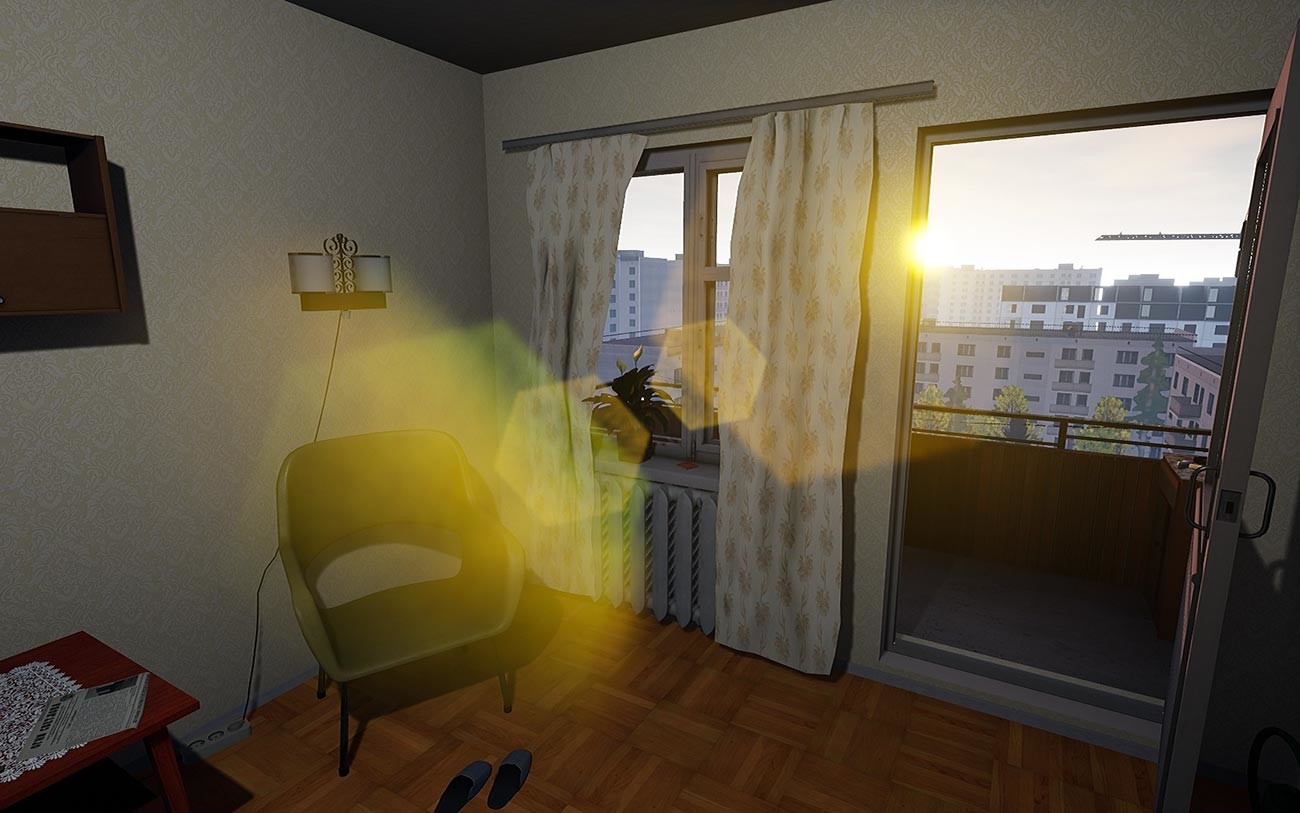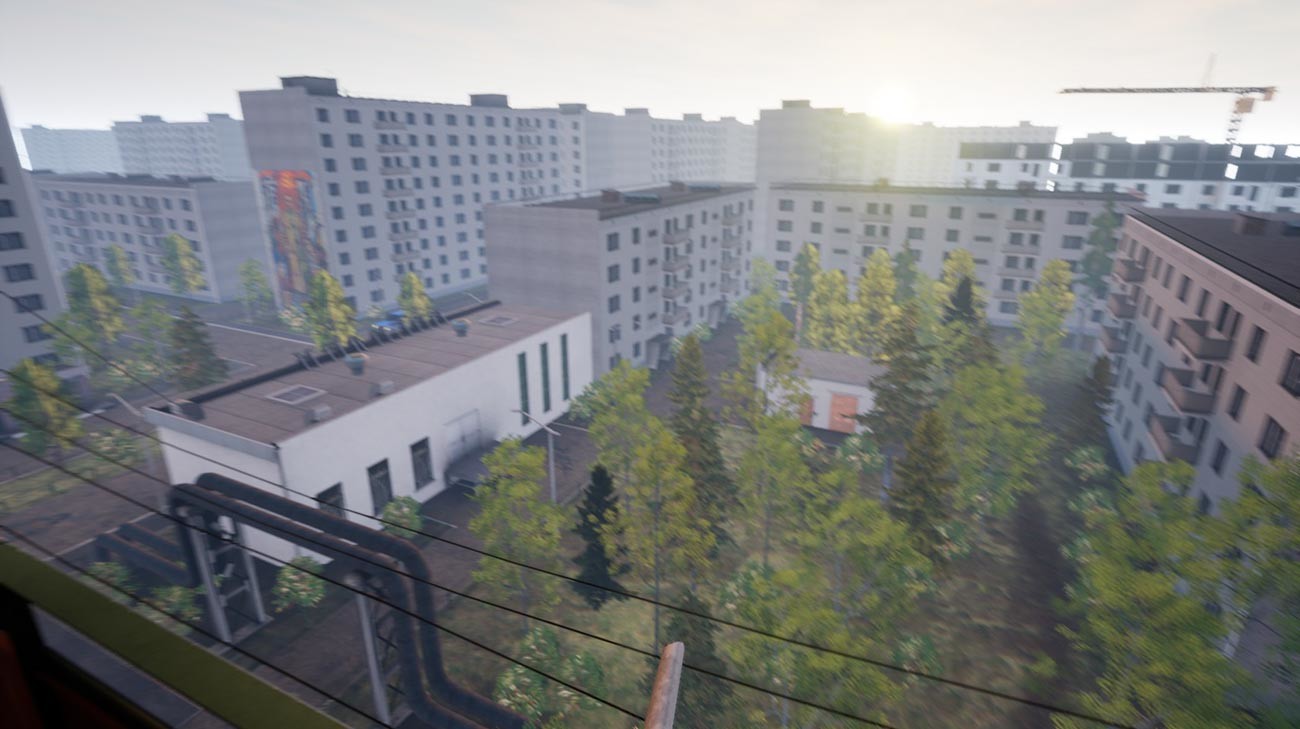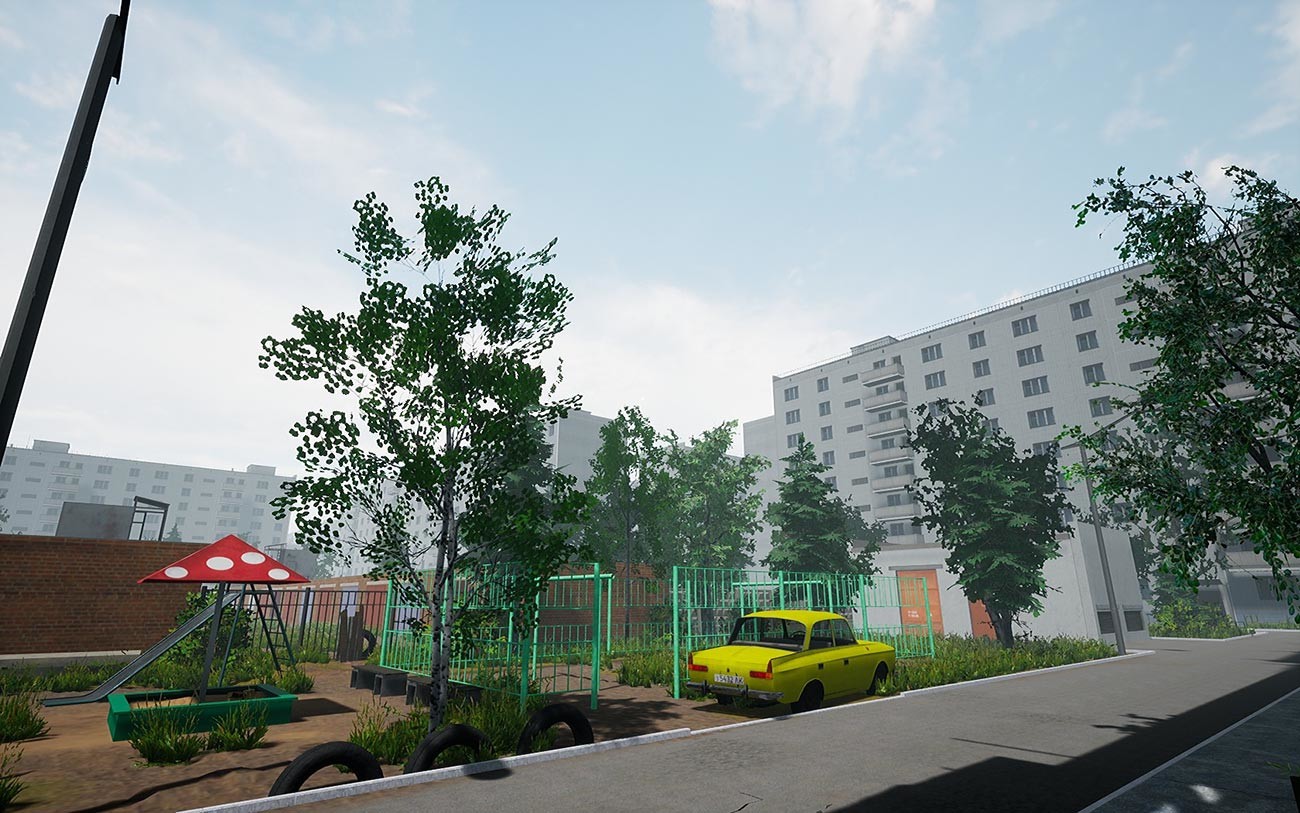This new Russian adventure game nails 1980s USSR

The new Russian indie adventure game focuses on the struggle of ordinary Soviet people, who fell victim to a dreary accident. And the suspenseful atmosphere of the late USSR is captured here perfectly.
As Tamara walks out of the elevator on the 8th floor and heads towards her apartment door, she bumps into a coffin lid. It stands next to the door of her neighbors' apartment. Apparently, the old drunk suddenly died. "That's how it is - he lived and now he's gone," Tamara says in a desperate tone. More people would die very soon in the very same apartment block and of the same causes. And not because of alcoholism or old age. We'll tell you why at the end of this review, but first let's talk about the game.

Vladimir Cholokyan
Bright Lights of Svetlov, a first-person adventure game created and developed by Vladimir Cholokyan, focuses on the heavy events that mauled the lives of several Soviet families in the Soviet town of Kramatorsk (now a part of the Donetsk region in Ukraine) during the 1980s. The "Kramatorsk radiological accident" ended the lives of several people, but the most dreadful part of the story was that their relatives didn't know the reason for several long years.
And that's what this fascinating game is about. The mesmerizing atmosphere of Soviet industrial city life in the 1980s. Speaking of which, this game is an impressive simulation of the routine life of an ordinary Soviet citizen.

Vladimir Cholokyan
Bright Lights of Svetlov was designed and developed by Vladimir Cholokyan, a designer and writer born in Penza - so he naturally grew up in the surroundings he recreated so beautifully in his game, also notable for its lighting design. By the way, 'Svetlov', the name of a fictional Soviet town the game takes place in, translates as "bright" from Russian.
Many goals in the game are really simple tasks like sweeping the floor, cooking food, or even having a smoke at the balcony overlooking a heavily vegetated inner yard. But the most haunting part of the game is the sound design.

Vladimir Cholokyan
As a Russian, I can honestly say that the game almost perfectly emulates the sound atmosphere of a remote Soviet town. As you walk around the sunlit one-bedroom apartment, fragments of radio broadcasts sprinkle from the kitchen, refrigerator hums in a low tone, birds are singing and kids are heard playing in the yard. Even the sound of footsteps differs depending on which character you play for in this game and there are several.

Vladimir Cholokyan
Anatoliy, an engineer. Tamara, his wife, and Nadya, their daughter; but there's more. The game action takes place in two apartments, a basement, in the street and beyond - and all the designs and surroundings are meticulously crafted - in terms of historical accuracy. Those who lived in the USSR would surely recognize a lot of familiar household objects in the game.
Searching for these objects and applying them to others is really the only gameplay, however, and, in this aspect, the game doesn't offer much. Halfway through the game (total gameplay is about 1.5-2 hours), you get kind of bored walking around the same apartment. You can't jump, run, or interact with random objects - the world of the game is quite limited.

Vladimir Cholokyan
But that's what makes it so accurate - because, in Soviet towns of the 1980s, life could be really bleak and dull, limited to the same places and surroundings, the same faceless talking heads on the TV (you can zap through channels endlessly - each of them broadcasts a Communist Party meeting), cooking dishes and sweeping the dust. But, at the same time, you could be dying from gamma radiation. So the main goal of the game is to find the cause of you feeling unwell, which eventually gets to every character you play.
[SPOILER ALERT]
Sorry, this game doesn't end well and it actually gets to your heart when you see with your own eyes (even though emulated in a video game) how useless many of the actions of ordinary Soviet people were against the heartless government system. But I guess that's the main feature of Bright Lights of Svetlov - to make a player feel how people in the last years of the USSR felt - a downward spiral and you don't know why.

Vladimir Cholokyan
History:
The "Kramatorsk radiological accident" was in effect from 1980 to 1989. A small capsule containing highly radioactive caesium-137 killed up to six people.
The capsule was originally a part of a radiation level gauge and was lost in a quarry in late 1970s. Later, the gravel from the quarry was used in construction and the capsule unluckily ended up in the concrete wall of an apartment building at Gvardeytsev-Kantemirovtsev Street, 7, in Kramatorsk. Its surface gamma radiation exposure dose rate was 1,800 Roentgen/year (while everything higher than 0.5 Roentgen a year is harmful to humans). Six people from three apartments that were exposed to gamma radiation died in the following nine years before the capsule was eventually discovered in 1989. In total, 17 people were acknowledged as having suffered from gamma exposure.
Please enable JavaScript to view the comments powered by Disqus.





